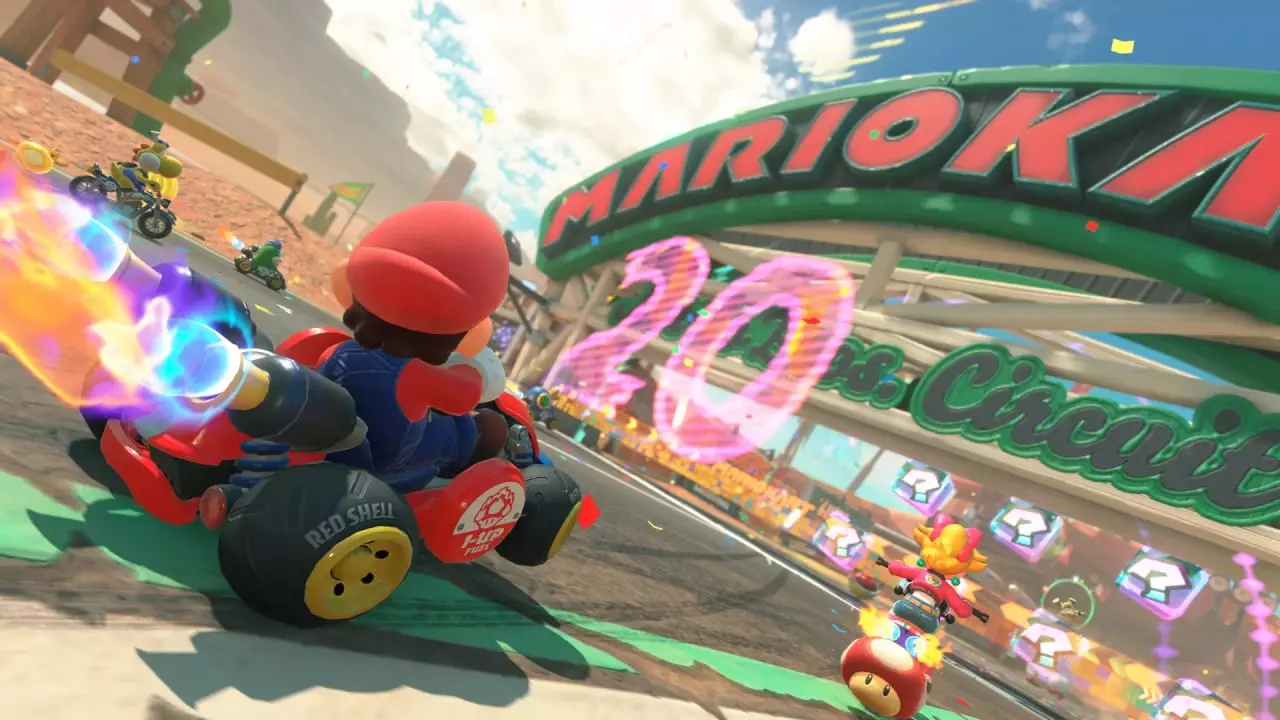The anticipation surrounding Nintendo’s initial launch title for the Switch 2, Mario Kart World, has reached an impressive crescendo. It’s become a focal point of discussion among gamers and industry analysts alike. The core reason for this excitement is rooted not only in the franchise’s stature but also in Nintendo’s strategic decision to make such an accessible entry point for both casual and experienced gamers. Nate Bihldorff from Nintendo of America highlighted its unique appeal, noting that the game serves as a bridge for players of all ages, catering to both novice and skilled racers.
Gaming frequently encounters titles that cater to niche audiences, but Mario Kart World is arguably designed to thrive in the mainstream – a calculated move by Nintendo that aligns well with gaming trends today. The brand’s history of creating inherently fun and competitive experiences is what sets it apart. Mario Kart is not just another racing game; it’s an arena where friendship and rivalry can coexist, making it a perfect addition to the new console’s library.
The Legacy of Mario Kart and Consumer Demand
Sales figures from Mario Kart 8 Deluxe speak volumes about the profitability and popularity of the franchise. With over 68 million units sold, it’s evident that there is a substantial demand for Mario Kart products. This type of sustained performance indicates a vigorous appetite within the gaming community for not just racing games but, more specifically, for Mario Kart titles. Bihldorff’s comments reinforce the notion that Mario Kart possesses a unique capacity to appeal across demographic lines – from the casual player to the die-hard Nintendo fans.
Furthermore, the ongoing interest in the franchise underscores a larger trend in gaming: while immersive storytelling and complex narratives are important, there is immense value in accessible games that promise fun and engagement. Mario Kart World exemplifies a project aiming to capture that essence, offering reasons for new and returning players to dive into this vibrant, chaotic racing universe.
Launch Timing and Market Strategy
Nintendo’s timing concerning the Switch 2 launch lineup is strategic and calculated. By introducing Mario Kart World alongside a new Donkey Kong game, the company is not just banking on nostalgia; they’re intent on defining future gaming experiences within their ecosystem. Bill Trinen’s remarks about the launch titles being “genre-defining” hint at an ambition that stretches beyond mere sales figures. The firm is clearly leveraging the unique capabilities of the Switch 2, potentially integrating advanced hardware features to offer an enriched gaming experience that players haven’t yet witnessed.
However, this strategy hasn’t come without its criticisms – the game’s anticipated price tag of $80 has sparked divisive debates among consumers. Are players willing to invest in a title with this price point at launch? Will the revamped gameplay and impressive graphics justify the cost for a game that many believe they may have already experienced through its predecessors? This pricing strategy certainly raises questions about perceived value within the gaming community and how it aligns with current expectations.
Final Thoughts on Mario Kart World
As Mario Kart World gears up for its release, the blend of nostalgia, innovation, and community engagement indicates it could stand out significantly. Nintendo’s risk in pricing and timing may very well pay off if they successfully deliver a title that both honors its legacy and maximizes the capabilities of the Switch 2. While there is no guaranteed success in the gaming industry, the stage is set for Mario Kart World to redefine the racing genre in a new era of console gaming. What remains to be seen is just how audiences will respond to this timely offering.


Leave a Reply